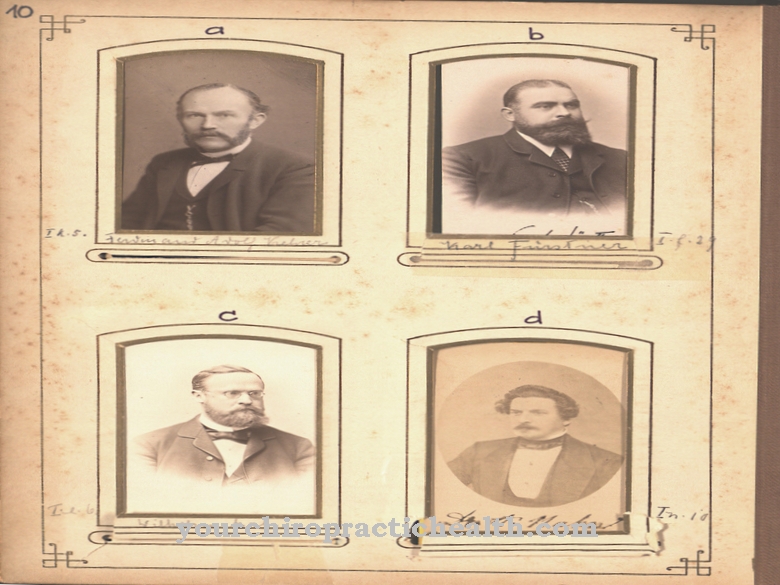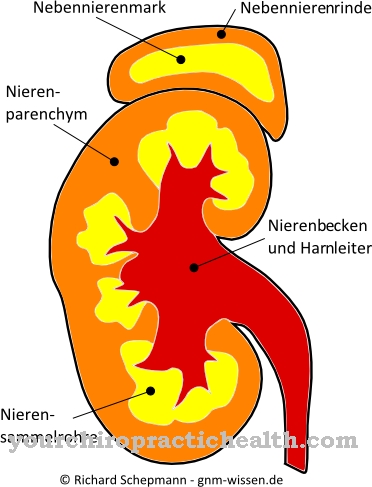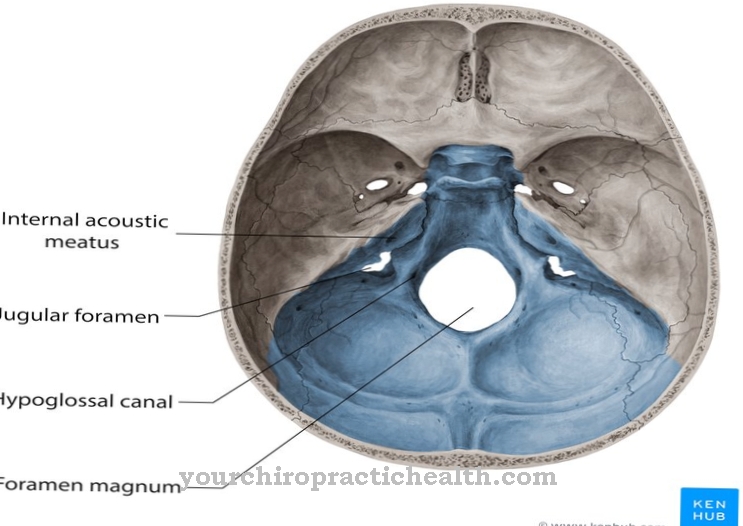As Meninges is called a layer of connective tissue that surrounds the brain. A distinction is made between three different meninges. The meninges continue in the spinal canal as the skin of the spinal cord.
What is meninges
The Meninges or Meninges lie around the brain, whereby a total of three skins can be distinguished:
- the hard meninges (Dura mater encephali)
- the cobweb skin (Arachnoidea encephali) or.
- the delicate meninges (Pia mater)
The first description of the meninges goes back to Herophilos of Chalcedon, who lived around 300 BC. Lived. In addition, the meninges are divided into extracranial and intracranial meninges. The meninges within the skull are intracranial. Extracranial is the term given to those that continue as spinal cord membranes and surround the central nervous system.
Anatomy & structure
On the very outside is the so-called hard meninges (Dura mater encephali), immediately followed by the cobweb skin (Arachnoidea encephali). The delicate meninges, also known as Pia mater encephali designated. Outside the skull, the meninges continue as spinal cord membranes and surround part of the central nervous system. The outermost meninges is made up of two leaves that separate from each other at certain points to form venous blood conductors (sinuses). These transport the blood from the brain or the meninges to the Internal jugular vein - to the internal jugular vein. The outer leaf also forms the inner periosteum and the inner leaf fuses with the cobweb skin. Accordingly, there is no space between the skull bone and the dura mater, but a so-called epidural space can arise due to trauma or hemorrhage. The hard meninges form dura septa at larger crevices, with the largest septum being the Falx cerebri that separates the cerebral hemispheres. In addition, the dura mater below the pituitary gland forms the so-called Sellae diaphragm or that Tentorium cerebelli located between the occipital lobe of the cerebrum and the cerebellum.
Under the dura mater lies the spider web skin, which is also involved in the formation of dural septa. The physiological subarachnoid space is located below the spider web. This represents the outer cerebrospinal fluid space in which the nerve water flows, through which the spinal cord or the brain are protected in the event of any impact.
The subarachnoid space is divided into connective tissue septa, through which the spider web and the pia mater are connected. The pia mater is the innermost layer of the meninges, which adjoins the brain tissue and forms a layer of connective tissue around the blood vessels. The meninges are made using the Anterior meningeal artery, of the Meningeal artery media as well as the Inferior meningeal artery supplied with blood.Function & tasks
The hard meninges protect the brain tissue, and their duplicators contain blood vessels through which the blood flows out of the brain. The cobweb skin forms fine protuberances, which are also called Pacchioni granulations.
Through them, the nerve water is resorbed from the subarachnoid space and released to the sinus veins. The choroid plexus is located in the inner liquor space, through which new liquor is constantly formed so that the liquor is constantly renewed. Due to the tight junctions between the cells, a barrier is created so that no blood components can get into the liquor. This is very important as many substances found in the blood would be toxic to the nervous tissue. The meninges also form the so-called blood-brain barrier, which controls which substances can reach the brain.
Diseases
A well-known disease is meningitis or meningitis, which is transmitted by viruses and bacteria. Meningitis leads to stiff neck, nausea and vomiting, headache, fever and dizziness.
If inflammation of the brain spreads to the meninges, one speaks of meningoencephalitis. This inflammation either spreads from the meninges to the brain or vice versa. If meningoencephalitis is not treated in time, it can lead to serious damage to the brain.
Other diseases that are related to the meninges are tumors that may be in the meninges and are called meningiomas. Meningiomas are benign growths that press on the nerves emerging from the brain or on the brain itself, which can lead to epileptic seizures and neurological failures.
Since the tumor grows very slowly, it is usually discovered relatively late. Irritation of the meninges can be recognized by the Brudzinski, Laségue or Kernig signs. Other symptoms that indicate meningeal irritation syndrome are headache, nausea, and vomiting, or sensitivity to noise and light.
One of the most common causes of meningeal irritation is migraine, which predominantly affects women. A migraine is a functional disorder of the meninges, the brain or the blood vessels that is neurobiological. A migraine is favored by certain factors (triggers). These include, for example, hormonal changes (e.g. ovulation), stress, certain foods (e.g. cheese, chocolate) or changes in the weather.
Then pulsating, often one-sided headaches as well as nausea, vomiting or sensitivity to light occur. Accidents can also lead to subarachnoid hemorrhage, which describes bleeding into the spaces between the meninges. If a meningeal artery ruptures, bleeding will also occur.
An epidural space then forms between the periosteum and the dura mater, which can lead to paralysis on one side. Rupture of the bridging veins can lead to a subdural hematoma, which causes symptoms such as decreased consciousness, headache, or dizziness.












.jpg)



.jpg)










.jpg)
